FERB YOUR ENTHUSIASM (INTRO)
By:
January 1, 2021
Happy New Year!
During 2021, HILOBROW will publish four “enthusiasm” series (of 25 posts apiece), at the rate of one per quarter.* Our first series of 2021 is… FERB YOUR ENTHUSIASM. We’ve asked HILOBROW friends and regulars to weigh in on the topic of one of their favorite animated cartoons.
The series lineup is amazing, and many of the installments are in the bag. I’m FERB YOUR ENTHUSIASM’s editor; what follows are notes based on what I’ve read so far.
* This is a departure from recent practice, which has for a few years involved a weekly series of 52 installments, plus a summer series of 25.
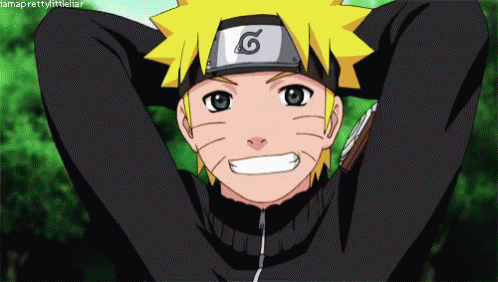
Animated cartoons, most of our contributors seem to agree, provide valuable life lessons… whether or not they were the lessons intended by the show’s creators.
Some of the lessons, particularly from anime series, are about grit and stick-to-it-iveness. For example, Dragon Ball Z, writes Holly Interlandi, is “about leveling up and bettering yourself. Sure, if you can save the world along the way, that’s great. But the power-up sequences, as long as they might last, were always worth it for us, because when the final battle came and Trunks or Gohan or whoever finally unleashed the ultimate power move, we felt like we’d been working to get there right alongside him.”
Recalling his days of watching Naruto, Adam Netburn says, “Still struggling to grow out of my clumsy pubescent stage, falling short in accomplishments by comparison with my peers, and hated by my high school’s cool kids, I had found my hero. Naruto grows stronger and overcomes obstacles in each episode, not only through training and force of will but by developing bonds with everyone he encounters. I was inspired by Naruto to reach out and gain some new friends myself.”
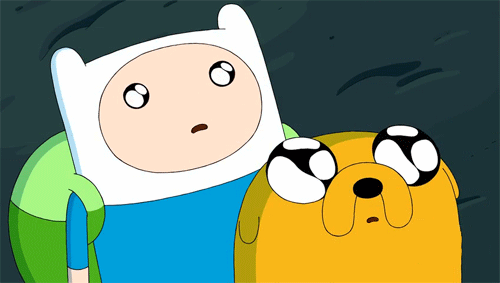
Writing about Big Mouth, Sam Glenn recalls an episode about the unexpected consequences of a young person’s overactive sense of shame: “Kids are making out, setting fires, and worm dancing; eventually, they burn the gym down. It’s a lesson for the Shame Wizard, who henceforth will help keep the kids in check, for their own good, without making their lives quite so incredibly challenging. Another valuable lesson that this ex-adolescent has learned from Big Mouth.”
Max Glenn recalls of Adventure Time that Finn the Human and Jake the Dog “were best friends who were comfortable in who they were, as weird and silly as that might be. They were kind of pudgy, they wanted to do good, they sang pretty songs about their feelings; there was a softness in the show’s depiction of boyhood and male friendship that felt real. Finn and Jake made it OK to be myself, to pay attention to my emotions.”
Luc Sante learned an anti-authoritarian lesson, from Top Cat: “I liked that the cats were con artists (even then I knew that cats are natural con artists). Since I hadn’t yet heard of Damon Runyon or seen Sergeant Bilko, to me the cats were hip — an unclear concept then — like Kookie Byrnes and Maynard G. Krebs. And that their foil was a policeman, too stupid to be feared but too rigid to be ignored, helped shape my permanent view of the law.”
Steven Universe, meanwhile, inspired Miranda Mellis to the following cosmic insight. The Crystal Gems’ “humanoid forms are emanations of a gemstone essence, mutable, elemental projections, personifications, so to speak, of the earth. Aren’t we all? A gemstone is a piece of mineral crystal: we’re 6% mineral, striated by tiny amounts of elements. […] We are, that is, kin to the inorganic, citizens of a mineral polity. Everyone’s last name is universe.”
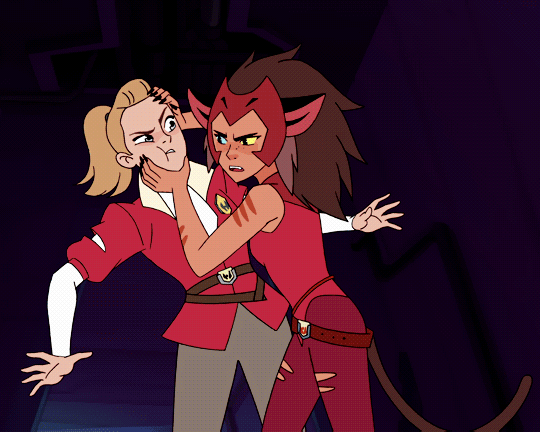
Even the dystopian shows offer encouragement, to those who know how to look for it. “At the time, it was enough to read the white lion’s paradise as the refuge of childhood, his outsmarting of bullies and conquerors the inherent wisdom of the young against those bigger and less imaginative. This was also the underlying idea of worldwide youth movements then being dismissed as juvenile utopianism,” recalls Adam McGovern of his Kimba the White Lion viewing. “That rejection made them in many ways a generation of orphans, cast off and forced to find their own way to shore. Kimba’s society, led by a child and governed on a maternal model, felt like a place that could and should be reached.”
Musing on She-Ra and the Princesses of Power, which she encountered as an adult, Ramona Lyons concludes, “I like that [SRPP] takes us into deeper and richer emotional waters. It reminds us that empowerment is personal and hard-won; that for every rainbow there’s rage, for every saccharine scene there’s a deep well of sadness, and for every girl-power song there’s bitter rivalry, angst, and loss just beneath the surface.”

The experience of watching cartoons is, of course, about much more than moral and ethical lessons learned. At their best, cartoons teach a master lesson in the art of story telling. Writing about Cowboy Bebop, Charlie Mitchell points to its world-building craftsmanship: “Everything you see has tacit explanation, or else just enough to sell a gritty life among the stars. The atmosphere almost starts breathing with vernacular like ‘ballad,’ ‘strut,’ and ‘blues,’ the jazz score, and the grit of the cast’s voices.”
Al Jarnow, who gave us the two-minute animation Cosmic Clock, writes Michael Grasso, “created art much like other producers of children’s programming in the 1970s and ’80s, works that didn’t talk down to us as a kid audience, that let our imaginations fill in the blanks: a true constructivist pedagogy. The reason I remember Cosmic Clock by heart even today, 40 years later, isn’t only because it was eerie and scary; it’s because an adult trusted me to learn — and process the meaning of that learning — myself.”
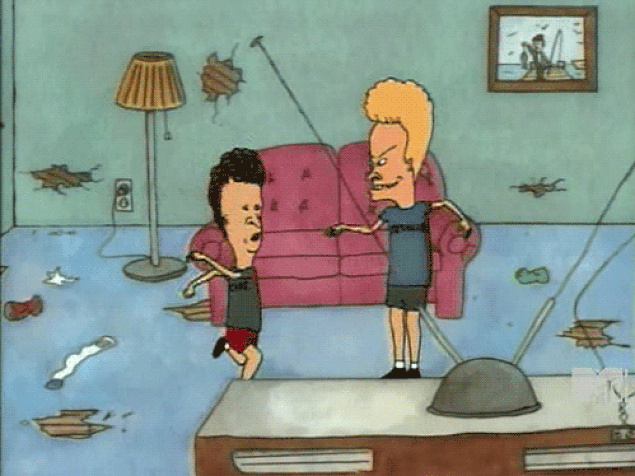
Beavis and Butt-head, notes Erin M. Routson, is enjoyable not because of its story-telling but because of its characters’ dedication to critiquing pop culture. “The best parts of this buddy comedy weren’t their antics or interactions with other characters beyond their couch (though, Cornholio is a revelation.) What is so amusing and rewatchable is them doing something that I still love to do with my best friends — sit around watching music videos and skewering them, or proclaiming them cool — the purest form of criticism perfected by Gen Xers.”
Mimi Lipson’s take on The Flintstones, meanwhile, defies summarizing. Among other things, it’s about a child’s experience of cognitive dissonance, as she watches a Stone Age-set cartoon based on a live-action TV show (The Honeymooners). And it’s written in the style of Plato’s allegory of the cave! “SOCRATES: While the people in the alcove put pails of garbage in the hall, read the classified section, and dream of bigger lives, their shadows smoke Winston cigarettes and eat enormous racks of ribs, enacting simpler versions of the ambitions and disappointments and misunderstandings of the originals.” I’d read an entire treatise on this topic.

Although HILOBROW contributors never stoop to “hate-watching,” they don’t hesitate to offer critiques of shows to which they were once addicted. Elizabeth Foy Larsen, rewatching The Jetsons, marvels that “its creators didn’t put much thought into imaging the potential unintended consequences of so much screen time. George and Jane never fret over whether or not Elroy and Judy will become addicted to their devices. Jane doesn’t get so upset about how she looks on those phone calls that she schedules an appointment with a plastic surgeon. George doesn’t go in search of glasses to protect his eyes from damaging blue-light rays.”
Regarding Jonny Quest, Lynn Peril wonders why there aren’t any female adventurers in it. “’We couldn’t put Mother in the series,’ Joe Barbera told a syndicated columnist in 1964, ‘then we’d be domestic again and Mother would be in the kitchen making sandwiches. We decided to get completely away from these homey scenes where even the dogs are obedient. Life isn’t like that.’ A Mrs. Quest who fought villains alongside Jonny and Hadji, while Race made the sandwiches, was as yet completely inconceivable.”
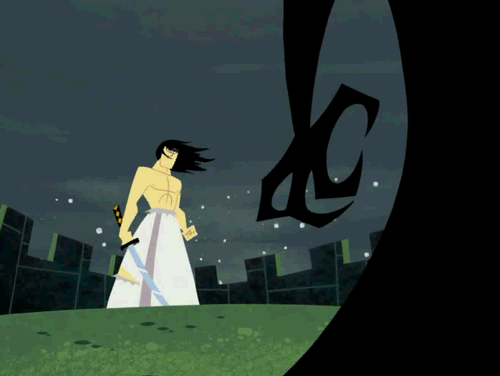
Cartoons are a visual medium, and each of our contributors has something to say about the design and illustration of their chosen shows. In a few cases, however, the medium is the message; the cartoonistry, not the plot or message, is the main draw. “Watching Samurai Jack is like watching a lava lamp,” enthuses Jonathan Pinchera. “Rather than a sense of scale or perspective, there’s a constant movement and collision of amorphous blobs. Oddly, this breakdown of form makes the show feel organic.”
Sara Ryan is equally amazed by the look of her favorite show: “Horror vacui, according to Oxford Languages, is “a fear or dislike of leaving empty spaces, especially in an artistic composition.” It’s also a fair description of the backgrounds in Bojack Horseman, often crowded with human and animal extras, sight gags and signs that reinforce the loopy logic of the Bojackiverse.”
Peggy Nelson, writing about Pink Panther, notes that “The Panther humanizes modern art, occupying the abstractions and showing the viewer (kids glued to morning cartoons on a Saturday morning) how to bring a place of mere shapes and lines to life. That ability, to individualize one’s world with imagination, is arguably more educational than the more straightforward edutainment offerings of public TV.”
To which I can only add: Amen.
Here’s the complete series lineup:
Miranda Mellis on STEVEN UNIVERSE | Luc Sante on TOP CAT | Peggy Nelson on PINK PANTHER | Charlie Mitchell on COWBOY BEBOP | Mimi Lipson on THE FLINTSTONES | Sam Glenn on BIG MOUTH | Mandy Keifetz on ROAD RUNNER | Ramona Lyons on SHE-RA | Holly Interlandi on DRAGON BALL Z | Max Glenn on ADVENTURE TIME | Joe Alterio on REN & STIMPY | Josh Glenn on SPEED RACER | Adam McGovern on KIMBA THE WHITE LION | Jonathan Pinchera on SAMURAI JACK | Lynn Peril on JONNY QUEST | Stephanie Burt on X-MEN THE ANIMATED SERIES and X-MEN: EVOLUTION | Elizabeth Foy Larsen on THE JETSONS | Adam Netburn on NARUTO | Madeline Ashby on AVATAR: THE LAST AIRBENDER | Tom Nealon on TRANSFORMERS | Sara Ryan on BOJACK HORSEMAN | Michael Grasso on COSMIC CLOCK | Erin M. Routson on BEAVIS & BUTTHEAD | Deborah Wassertzug on DARIA | Lydia Millet on BOB’S BURGERS.
Alas, we couldn’t cover all of our favorite shows. We regret, for example, not being able to include: ARCHER, GRAVITY FALLS, JEM, JOSIE AND THE PUSSYCATS, KIM POSSIBLE, KING OF THE HILL, MY LITTLE PONY, THE POWERPUFF GIRLS, RICK AND MORTY, THE SIMPSONS, SPACE GHOST COAST TO COAST, SPONGEBOB, STAR WARS: CLONE WARS, TEEN TITANS GO, TEENAGE MUTANT NINJA TURTLES, UNDERDOG, and — of course — PHINEAS & FERB, to which our series title pays homage.
What about ROCKY & BULLWINKLE, LOONEY TUNES, and MARC ANTHONY & PUSSYFOOT, you demand? We covered these in a previous series about TV shows of the Fifties (1954–1963).
Enjoy!
NERD YOUR ENTHUSIASM (4Q2021): NERDING | ARDUIN | KLINGON CONFIDENTIAL | MAP INSERTS | TIME | & 20 other nerdy passions. SWERVE YOUR ENTHUSIASM (3Q2021): WARHOL’S WALT WHITMAN | 70, GIRLS, 70 | TYRAEL’S MIGHT | SHIRATO SANPEI | THE LEON SUITES | & 20 other never-realized cultural productions. FIVE-O YOUR ENTHUSIASM (2Q2021): DARK SHADOWS | MANNIX | GET SMART | THE ADDAMS FAMILY | I DREAM OF JEANNIE | & 20 other Sixties (1964–1973) TV shows. FERB YOUR ENTHUSIASM (1Q2021): STEVEN UNIVERSE | TOP CAT | REN & STIMPY | SHE-RA AND THE PRINCESSES OF POWER | DRAGON BALL Z | & 20 other animated series. CARBONA YOUR ENTHUSIASM (2020): “Sex Bomb” | “Going Underground” | “Soft South Africans” | “Typical Girls” | “Human Fly” | & 20 other Seventies (1974–1983) punk singles. KLAATU YOU (2020 weekly): ZARDOZ | METROPOLIS | DARK STAR | SINS OF THE FLESHAPOIDS | SOLARIS | & dozens of other pre-STAR WARS sci-fi movies. CONVOY YOUR ENTHUSIASM (2019): THE TAKING OF PELHAM ONE TWO THREE | ROLLERBALL | BLACK SUNDAY | SORCERER | STRAIGHT TIME | & 20 other Seventies (1974–1983) action movies. SERIOCOMIC (2019 weekly): LITTLE LULU | VIZ | MARSUPILAMI | ERNIE POOK’S COMEEK | HELLBOY | & dozens of other comics. TUBE YOUR ENTHUSIASM (2018): LOONEY TUNES | THREE STOOGES | THE AVENGERS | ROCKY & BULLWINKLE | THE TWILIGHT ZONE | & 20 other Fifties (1954–1963) TV shows. WOWEE ZOWEE (2018 weekly): UNISEX | UNDER THE PINK | DUMMY | AMOR PROHIBIDO | HIPS AND MAKERS | & dozens of other Nineties (1994–2003) albums. KLUTE YOUR ENTHUSIASM (2017): THE KILLERS | BANDE À PART (BAND OF OUTSIDERS) | ALPHAVILLE | HARPER | BLOW-UP | & 20 other Sixties (1964–1973) neo-noir movies. #SQUADGOALS (2017 weekly): THE WILD BUNCH | BOWIE’S BAND | THE BLOOMSBURY GROUP | THE HONG KONG CAVALIERS | VI ÄR BÄST! & dozens of other squads. GROK MY ENTHUSIASM (2016 weekly): THE THEORY AND PRACTICE OF LUNCH | WEEKEND | MILLION YEAR PICNIC | LA BARONNE EMILE D’ERLANGER | THE SURVIVAL SAMPLER | & dozens more one-off enthusiasms. QUIRK YOUR ENTHUSIASM (2016): “Tainted Love” | “Metal” | “Frankie Teardrop” | “Savoir Faire” | “Broken English” | & 20 other Seventies (1974–1983) new wave singles. CROM YOUR ENTHUSIASM (2015): DARKER THAN YOU THINK | THE SWORD IN THE STONE | OUT OF THE SILENT PLANET | THIEVES’ HOUSE | QUEEN OF THE BLACK COAST | & 20 other Thirties (1934–1943) fantasy novels. KERN YOUR ENTHUSIASM (2014): ALDINE ITALIC | DATA 70 | TORONTO SUBWAY | JOHNSTON’S “HAMLET” | TODD KLONE | & 20 other typefaces. HERC YOUR ENTHUSIASM (2013): “Spoonin’ Rap” | “Rapper’s Delight” | “Rappin’ Blow” | “The Incredible Fulk” | “The Adventures of Super Rhyme” | & 20 other Seventies (1974–1983) hip-hop songs. KIRK YOUR ENTHUSIASM (2012): Justice or vengeance? | Kirk teaches his drill thrall to kiss | “KHAAAAAN!” | “No kill I” | Kirk browbeats NOMAD | & 20 other Captain Kirk scenes. KIRB YOUR ENTHUSIASM (2011): THE ETERNALS | BLACK MAGIC | DEMON | OMAC | CAPTAIN AMERICA | & 20 other Jack Kirby panels.
